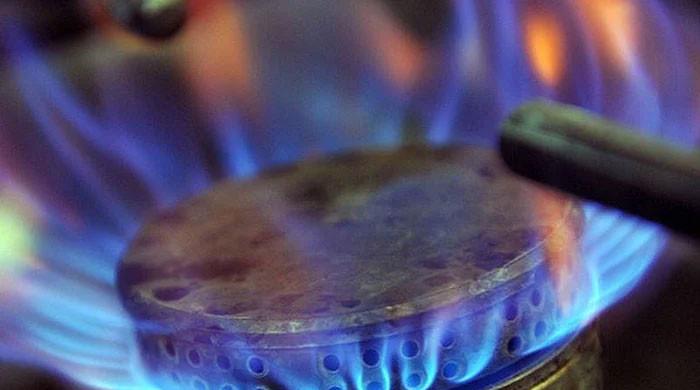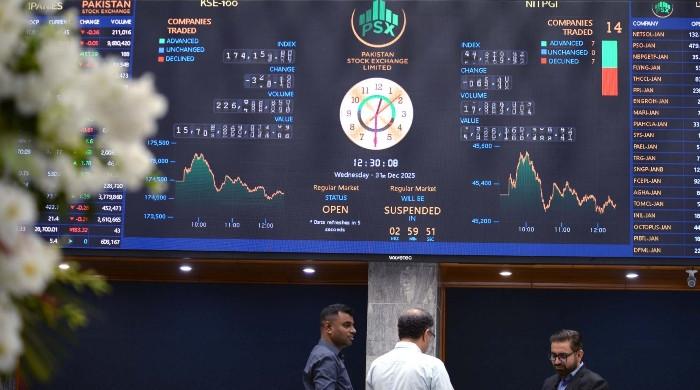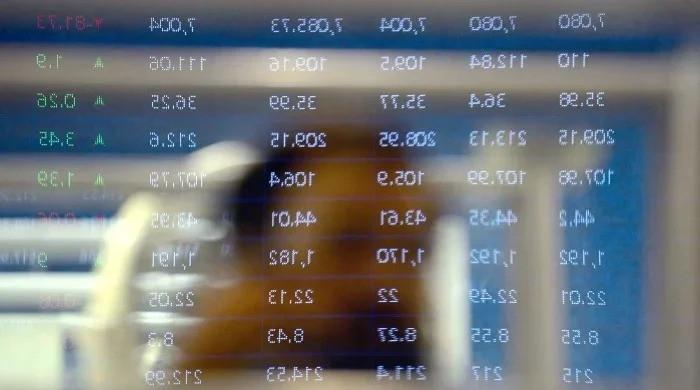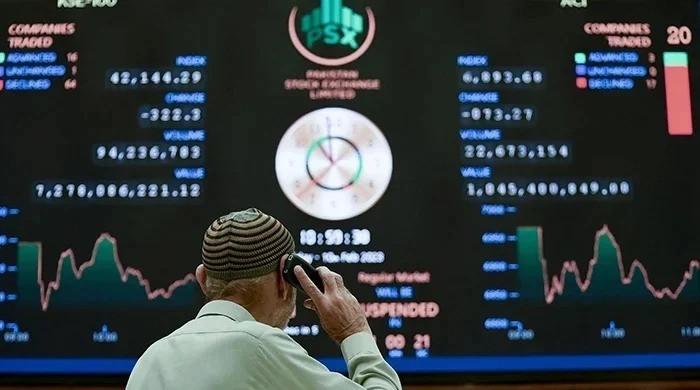Govt signals growth slowdown, foresees 5% GDP growth in FY23
APCC signs off on macroeconomic framework for budget of incoming fiscal year, targeting average inflation of 11.5%
June 05, 2022

- APCC approves inflation rate of 11.5% on average for incoming fiscal year.
- Govt highlights inflation target was missed as it was initially envisaged at 8% on eve of 2021-22 budget.
- Envisages current account deficit in range of 2.1% of GDP equivalent to over $10b for next FY.
ISLAMABAD: The Annual Plan Coordination Committee (APCC) has signed off on the macroeconomic framework for the budget 2022-23, which targets real GDP growth of 5% and an inflation rate of 11.5% on average.
The government also highlighted that the inflation target was missed as it was initially envisaged at 8% on the eve of the last budget for 2021-22, but it had already climbed up to 13.3% in provisional estimates.
The APCC meeting also approved the GDP growth rate of 5.97%.
The government’s envisaged inflation is hovering around 11.5% for the next fiscal at a time when independent economists like Dr Hafiz A Pasha had predicted that the CPI might climb up to 25% in the next fiscal year owing to increased administrative prices of utilities and higher taxation.
The government has envisaged a current account deficit in the range of 2.1% of GDP equivalent to over $10 billion for next fiscal.
The APCC approved macroeconomic framework, which states that with the likely resumption of IMF programme, the economic outlook for the next fiscal year 2022-23 is expected to result in orderly rebalancing between imperatives of economic growth and addressing the external sector vulnerabilities; particularly in the light of extent of global slowdown and the expected abatement of global inflation in commodity prices and the stability of exchange rate movements.
Fiscal adjustment efforts, addressing worsening trade balance, mitigating political and economic uncertainty will slow down economic growth. Keeping in view the external and local uncertain economic environment, GDP growth will slightly taper off and is envisaged at 5% for 2022-23 on the back of agriculture (3.9%), manufacturing (7.1%), and services sector (5.1%).
Investment will also be moderated because of fiscal and current account compression. Inflation will stay in double digit as global inflationary pressures will not taper off very quickly.
The projected agriculture growth performance at 3.9% is mainly contingent upon revival of cotton and wheat production, consistent availability of water, certified seeds, fertilisers, pesticides, and agriculture credit facilities. Revival of both these crops will not only support growth momentum but will also ease out BoP pressures through lesser import requirements.
Elevated industrial performance over the past two years is expected to consolidate and augmented production capacity during these years will anchor the growth momentum, which will be moderated owing to fiscal consolidation efforts.
The broad-based revival of LSM is projected to sustain growth at 7.4% during 2022-23. There are downside risks of high cost and low supplies of energy inputs, exchange rate related uncertainties and Russia-Ukraine war related supply shocks, which have potential to impact manufacturing sector. The overall manufacturing sector is projected to post growth of 7.1% during 2022-23.
Services sector will also be subjected to moderation in growth and is targeted to grow by 5.1% in 2022-23, which is still lower than its five-year pre-Covid-19 annual average growth of 5.3%. Expected performance in both agriculture and industrial sectors will complement the targeted growth in services sector.
Moreover, investment level for the year 2022-23 is expected to decrease slightly to 14.7% of GDP due to stabilisation and uncertain economic environment.
Fixed Investment is expected to grow by 13% on nominal basis; however, as the percentage of GDP it will decrease marginally as compared with last year and will remain around 13% of GDP in 2022-23. National Savings rate is targeted at 12.5% of GDP for the next fiscal year.









